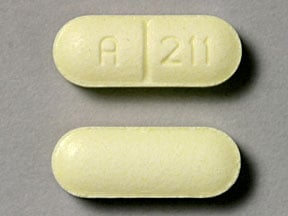
Pentazocine-naloxone Coupons & Savings Card – Discount Prices from $42.84
My prescription
Edit
50-0.5MG, Pentazocine-naloxone (30 Tablets)
Select pharmacy

CVS
$42.84
COUPON PRICE
Walgreens
$58.50
COUPON PRICEFree Pentazocine-naloxone Savings Card

CVS
$42.84
Show this coupon to your pharmacist
ID
LHF2E1E598
PCN
CHIPPO
BIN
019876
GRP
LHX
This coupon is not insurance
More prescriptions for pain
More prescriptions for pain
Pentazocine-naloxone dosage forms
Dosage Quantity Price from Per unit 50-0.5MG 30 Tablets $42.84 $1.43 50-0.5MG 60 Tablets $67.68 $1.13 50-0.5MG 90 Tablets $92.52 $1.03
| Dosage | Quantity | Price from | Per unit |
|---|---|---|---|
| 50-0.5MG | 30 Tablets | $42.84 | $1.43 |
| 50-0.5MG | 60 Tablets | $67.68 | $1.13 |
| 50-0.5MG | 90 Tablets | $92.52 | $1.03 |
Pentazocine-naloxone Warnings
Pentazocine, an opioid medication, carries significant risks and requires careful use. This guide outlines key safety information to help ensure its safe administration and to prevent serious complications.
Risk of Abuse and Addiction: Pentazocine has a high potential for misuse, abuse, and addiction, even at prescribed doses. This can lead to overdose and potentially fatal consequences. The FDA mandates a Risk Evaluation and Mitigation Strategy (REMS) for opioids to inform patients about safe use, potential risks, and proper storage and disposal. Individuals with a personal or family history of substance abuse or mental health disorders should exercise additional caution.
Severe Breathing Problems: This medication can cause dangerously slowed breathing, especially when starting the treatment or increasing the dose. Symptoms include shortness of breath, shallow breathing, and bluish lips or extremities. Drinking alcohol or using other sedatives can exacerbate these effects. Immediate medical attention is necessary if you observe these symptoms.
Pregnancy and Newborn Risk: Pregnant individuals should use pentazocine only if absolutely necessary, as prolonged use can lead to neonatal opioid withdrawal syndrome, a potentially life-threatening condition for the newborn. This includes symptoms like poor feeding, breathing difficulties, and seizures. Experts should provide care for affected infants.
Hormonal and Blood Pressure Effects: Long-term use may lead to adrenal insufficiency, causing symptoms like fatigue, nausea, and dizziness. Pentazocine can also cause significant drops in blood pressure, leading to dizziness or fainting, especially when standing. Older adults and those on blood pressure medications should be particularly cautious.
Mental and Seizure Risks: The medication might cause mental changes such as hallucinations or confusion, typically short-lived. It can also increase the frequency of seizures in those with a seizure disorder. Inform your healthcare provider if you have a history of seizures before starting this medication.
Serotonin Syndrome: Concurrent use with drugs that elevate serotonin levels could lead to serotonin syndrome, a severe condition characterized by symptoms like rapid heart rate, unstable blood pressure, and hallucinations. Seek immediate medical help if these symptoms occur.
In case of overdose or accidental ingestion, especially by children, seek emergency medical attention immediately. Always store this medication securely to prevent theft, misuse, or accidental consumption.
Before taking pentazocine, individuals with severe asthma, severely slowed breathing, or gastrointestinal blockages should consult their healthcare provider, as it may pose serious health risks.
Pentazocine-naloxone Side Effects
Common side effects:
- nausea
- vomiting
- constipation
- diarrhea
- dizziness
- drowsiness
- increased sweating
- headache
- dry mouth
- itchiness
Less common but important to monitor:
- lightheadedness
- changes in blood pressure
- fast heartbeat
- fainting
- hallucinations
- disturbing dreams
- trouble sleeping
- depression
- confusion
- seizures
- flushing
- loss of appetite
- dry mouth
- vision changes
- trouble urinating
Serious side effects:
- severe drowsiness
- slowed breathing
- trouble breathing
- swelling of the face, tongue, or throat
- serotonin syndrome
- overdose symptoms
- blue-gray skin tone
Pentazocine-naloxone Interactions
Interactions with high risk of serious adverse effects and should be avoided:
- MAO inhibitors (isocarboxazid, Linezolid, Metaxalone, methylene blue, moclobemide, phenelzine, procarbazine, Rasagiline, safinamide, Selegiline, Tranylcypromine)
- Nalmefene
Interactions with moderate risk that may require dose adjustment, closer monitoring, or timing changes:
- Fluoxetine
- Naltrexone
- Samidorphan
- Other opioid pain or cough relievers (such as codeine, hydrocodone)
- Alcohol
- Marijuana (cannabis)
- Drugs for sleep or anxiety (such as Alprazolam, Lorazepam, Zolpidem)
- Muscle relaxants (such as Carisoprodol, Cyclobenzaprine)
- Antihistamines (such as Cetirizine, diphenhydramine)
- Cigarette smoking
